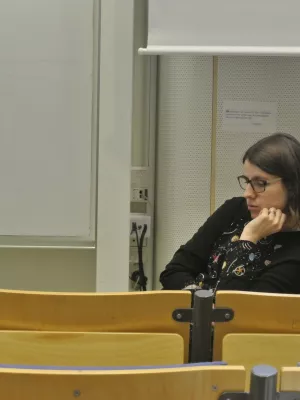
Sanna Alwmark
Postdoc

Shocked quartz in distal ejecta from the Ries impact event (Germany) found at ~ 180 km distance, near Bernhardzell, eastern Switzerland
Författare
Summary, in English
Impact ejecta formation and emplacement is of great importance when it comes to understanding the process of impact cratering and consequences of impact events in general. Here we present a multidisciplinary investigation of a distal impact ejecta layer, the Blockhorizont, that occurs near Bernhardzell in eastern Switzerland. We provide unambiguous evidence that this layer is impact-related by confirming the presence of shocked quartz grains exhibiting multiple sets of planar deformation features. Average shock pressures recorded by the quartz grains are ~ 19 GPa for the investigated sample. U–Pb dating of zircon grains from bentonites in close stratigraphic context allows us to constrain the depositional age of the Blockhorizont to ~ 14.8 Ma. This age, in combination with geochemical and paleontological analysis of ejecta particles, is consistent with deposition of this material as distal impact ejecta from the Ries impact structure, located ~ 180 km away, in Germany. Our observations are important for constraining models of impact ejecta emplacement as ballistically and non-ballistically transported fragments, derived from vastly different depths in the pre-impact target, occur together within the ejecta layer. These observations make the Ries ejecta one of the most completely preserved ejecta deposit on Earth for an impact structure of that size.
Avdelning/ar
- Berggrundsgeologi
Publiceringsår
2021
Språk
Engelska
Publikation/Tidskrift/Serie
Scientific Reports
Volym
11
Issue
1
Dokumenttyp
Artikel i tidskrift
Förlag
Nature Publishing Group
Ämne
- Geology
Status
Published
ISBN/ISSN/Övrigt
- ISSN: 2045-2322

